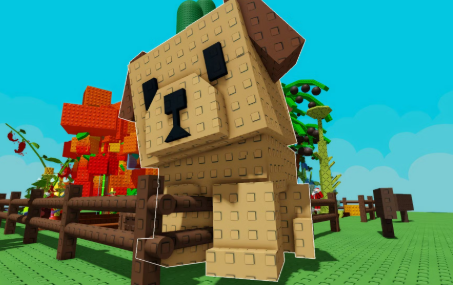How to Get Rare Pets in Grow A Garden Through Events and Crafting

In Grow A Garden, pets are more than just cute companions—they can dramatically boost your garden’s efficiency, automate tasks, and even generate valuable rewards. While many players are happy to settle for common pets early on, rare pets are where the real fun (and power) begins. If you’re looking to get your hands on these elusive companions, events and crafting are two of the most reliable—and exciting—paths to success.
Here’s a breakdown of how to get rare pets in Grow A Garden through events and crafting, based on in-game mechanics and personal experience.
1. Limited-Time Events: The Best Source for Rare Pets
If you’re aiming to build a rare pet collection in Grow A Garden, limited-time events are where you’ll find some of the most powerful and exclusive pets. These events are typically tied to seasonal updates, holidays, or special themes like the Zen Event, Lunar Glow Event, or Friendship Update.
Types of Event Rewards:
- Event Eggs: Events often introduce a new egg that contains a unique pool of pets. For example, the Zen Egg includes the ultra-rare Kitsune (0.08% chance), and the Night Egg contains the Raccoon (0.1% chance). These eggs can usually only be obtained during the event period.
- Quest Milestones: Many events feature time-limited quests or progression systems—like the Zen Tree or Corrupt Zen Quests—that reward you with either eggs, crafting materials, or chests like the Kitsune Chest (which has a 1% chance of giving you the Corrupted Kitsune).
- Event Shops: You’ll often find event currencies like Chi, Blood Moon Tokens, or Honey that can be exchanged for eggs or crafting components in the limited-time shop.
Pro Tip:
Always check the event tab the moment an update drops. Some rewards are tied to daily login streaks or first-week-only challenges. Missing them might mean waiting months for a rerun—if they ever return at all.
My Experience:
During the Zen Event, I focused on farming Chi and completed the daily Zen Tree tasks religiously. After opening five Zen Eggs, I actually managed to hatch a Tanchozuru—not quite a Kitsune, but still an epic addition to my garden!
2. Crafting Rare Eggs: A Patient Player’s Path
If you prefer a more reliable, grind-based method—or you missed an event entirely—crafting rare eggs is your next best bet. Many of the game’s rarer pets can be obtained through crafting stations, provided you have the right ingredients.
How Crafting Works:
You’ll typically need:
- A base egg (like Bee Egg, Bug Egg, or other event-specific variants)
- Special materials (such as Honey, Zen Fragments, or event drops)
- Time (Crafting often takes 2–8 hours)
For example:
To craft an Anti Bee Egg (required for Disco Bee, 0.25% chance), you need:
- 1 Bee Egg
- 25 Honey
- Crafting time: 2 hours
- Location: Cosmetics / Crafting Stand
Some items like the Bee Egg might be available from regular gameplay or past events, while materials like Honey can be passively farmed over time using harvesting pets.
Tips for Crafting Success:
- Craft Multiple Eggs: Since drop rates are low, queue up several eggs if possible. You’ll increase your odds and save time.
- Check for Crafting Discounts: Occasionally, crafting times or resource requirements are reduced during minor updates or quality-of-life patches.
- Use Pet Passives: Equip pets like Snail (boosts seed drop chance) or Wasp (increases pollination/mutation effects) to accelerate resource gathering.
Personal Tip:
Before crafting a Bug Egg for a shot at the Dragonfly, I stocked up over 100 million sheckles and farmed seed drops with a team of passive utility pets. It took several eggs, but I finally got the Dragonfly—and its passive boost to leafy plants made the grind completely worth it.
3. Drop Rates: What to Expect When Hatching Rare Pets
In Grow A Garden, hatching rare pets isn’t just about collecting the right egg—it’s about understanding the odds. Every pet egg in the game has its own loot pool, and within that pool, each pet comes with a specific drop chance. For the rarest pets, these chances are usually quite low, often hovering between 0.1% and 1%.
Take the Disco Bee, for example. It’s a Divine pet with a drop rate of just 0.25% from the Anti Bee Egg. Similarly, the highly sought-after Kitsune has a mere 0.08% chance from the Zen Egg, making it one of the rarest pets in the game. Other pets like the Dragonfly (1% from the Bug Egg) or Corrupted Kitsune (1% from Kitsune Chests) are also difficult to get, but their chances are slightly more forgiving.
It’s important to manage your expectations when going after these pets. A low drop rate doesn’t mean it’s impossible—it just means you may need to hatch several eggs before seeing results. Some players get lucky on their first or second try, while others may need to open five or more.
From personal experience, it helps to think of each hatch as progress, not failure. Even if you don’t get the exact rare pet you’re aiming for, many of the “non-rare” pets you get along the way still offer useful traits or can be traded or sold for profit.
Bottom line: rare pets are designed to be special. They’re meant to take effort and persistence. The thrill of finally hatching one after a long grind is part of what makes Grow A Garden so satisfying for collectors and dedicated players.
4. Strategies to Increase Your Odds
While you can’t directly increase hatch percentages, you can improve your odds of success by managing your time and resources smartly. Here are some of the strategies I’ve used and seen work well in the community.
A. Stockpile Ahead of Events
- Keep materials like Honey, Bee Eggs, Event Currency, and Crafting Ingredients in reserve.
- Don’t spend all your sheckles or items before an update—many new pets require old base resources.
- Monitor developer social posts or Discord leaks for upcoming egg requirements.
B. Focus on One Rare Pet at a Time
- If you’re chasing Dragonfly, don’t waste sheckles on Zen or Night Eggs. Narrow your focus and commit your resources to just that egg pool.
- This not only saves resources but makes the grind feel more structured and purposeful.
C. Use Utility Pets to Farm Crafting Materials
Equip pets that provide seed drops, crop duplication, or growth speed boosts.
- Snail: Improves chance for seed returns.
- Giant Ant: Can duplicate harvested fruits.
- Caterpillar: Boosts growth for leafy plants (great for fast harvesting).
These pets indirectly help you farm more ingredients needed for crafting rare eggs.
D. Plan Around Craft Timers
- Eggs like the Anti Bee Egg take 2 hours to craft. If you know you’ll be away, start a craft session before logging off.
- Keep your crafting stations busy. Idle time is missed opportunity.
My Strategy Example:
When farming for Disco Bee, I ran two crafting stations with alternating Anti Bee Egg queues. Meanwhile, I had a Snail and Giant Ant helping me farm Honey and crop materials. After five eggs, I finally pulled one Disco Bee—and even if I hadn’t, I still made a huge profit from the other high-tier pets I got in the process.





